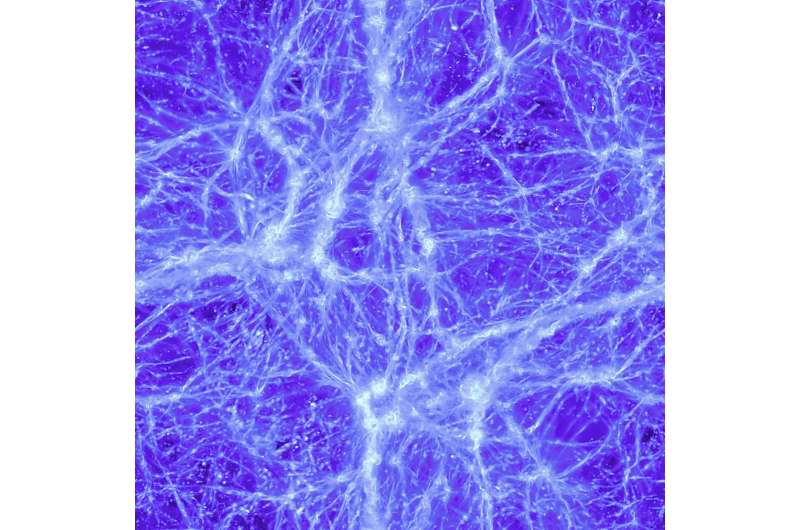Exchanges of identity in deep space

By reproducing the complexity of the cosmos through unprecedented simulations, a new study highlights the importance of the possible behaviour of very high-energy photons. In their journey through intergalactic magnetic fields, such photons could be transformed into axions and thus avoid being absorbed.
Like in a nail-biting thriller full of escapes and subterfuge, photons from far-off light sources such as blazars could experience a continuous exchange of identity in their journey through the universe. This would allow these very tiny particles to escape an enemy which, if encountered, would annihilate them. Normally, very high-energy photons (gamma rays) should "collide" with the background light emitted by galaxies and transform into pairs of matter and antimatter particles, as envisaged by the Theory of Relativity. For this reason, the sources of very high-energy gamma rays should appear significantly less bright than what is observed in many cases.
A possible explanation for this surprising anomaly is that light photons are transformed into hypothetical weakly interacting particles, "axions," which, in turn, would change into photons, all due to the interaction with magnetic fields. A part of the photons would escape interaction with the intergalactic background light that would make them disappear. The importance of this process is emphasised by a study published in Physical Review Letters, which recreated an extremely refined model of the cosmic web, a network of filaments composed of gas and dark matter present throughout the universe, and of its magnetic fields. These effects are now awaiting comparison with those obtained experimentally through Cherenkov Telescope Array new generation telescopes.
Through complex and unprecedented computer simulations made at the CSCS Supercomputing Centre in Lugano, scholars have reproduced the so-called cosmic web and its associated magnetic fields to investigate the theory that photons from a light source are transformed into axions, hypothetical elementary particles, on interacting with an extragalactic magnetic field. Axions could then be changed back into photons by interacting with other magnetic fields. Researchers Daniele Montanino, Franco Vazza, Alessandro Mirizzi and Matteo Viel write, "Photons from luminous bodies disappear when they encounter extragalactic background light (EBL). But if on their journey they head into these transformations as envisaged by these theories, it would explain why, in addition to giving very important information on processes that occur in the universe, distant celestial bodies are brighter than expected from an observation on Earth. These changes would, in fact, enable a greater number of photons to reach the Earth."
Thanks to the wealth of magnetic fields present in the cosmic web's filaments, which were recreated with the simulations, the conversion phenomenon would seem much more relevant than predicted by previous models: "Our simulations reproduce a very realistic picture of the cosmos' structure. From what we have observed, the distribution of the cosmic web envisaged by us would markedly increase the probability of these transformations." The next step in the research is to compare simulation results with the experimental data obtained through the use of the Cherenkov Telescope Array Observatories detectors, the new-generation astronomical observatories, one of which is positioned in the Canary Islands and the other in Chile. They will study the universe through very high-energy gamma rays.
More information: Daniele Montanino et al, Enhancing the Spectral Hardening of Cosmic TeV Photons by Mixing with Axionlike Particles in the Magnetized Cosmic Web, Physical Review Letters (2017). DOI: 10.1103/PhysRevLett.119.101101
Journal information: Physical Review Letters
Provided by International School of Advanced Studies (SISSA)




















